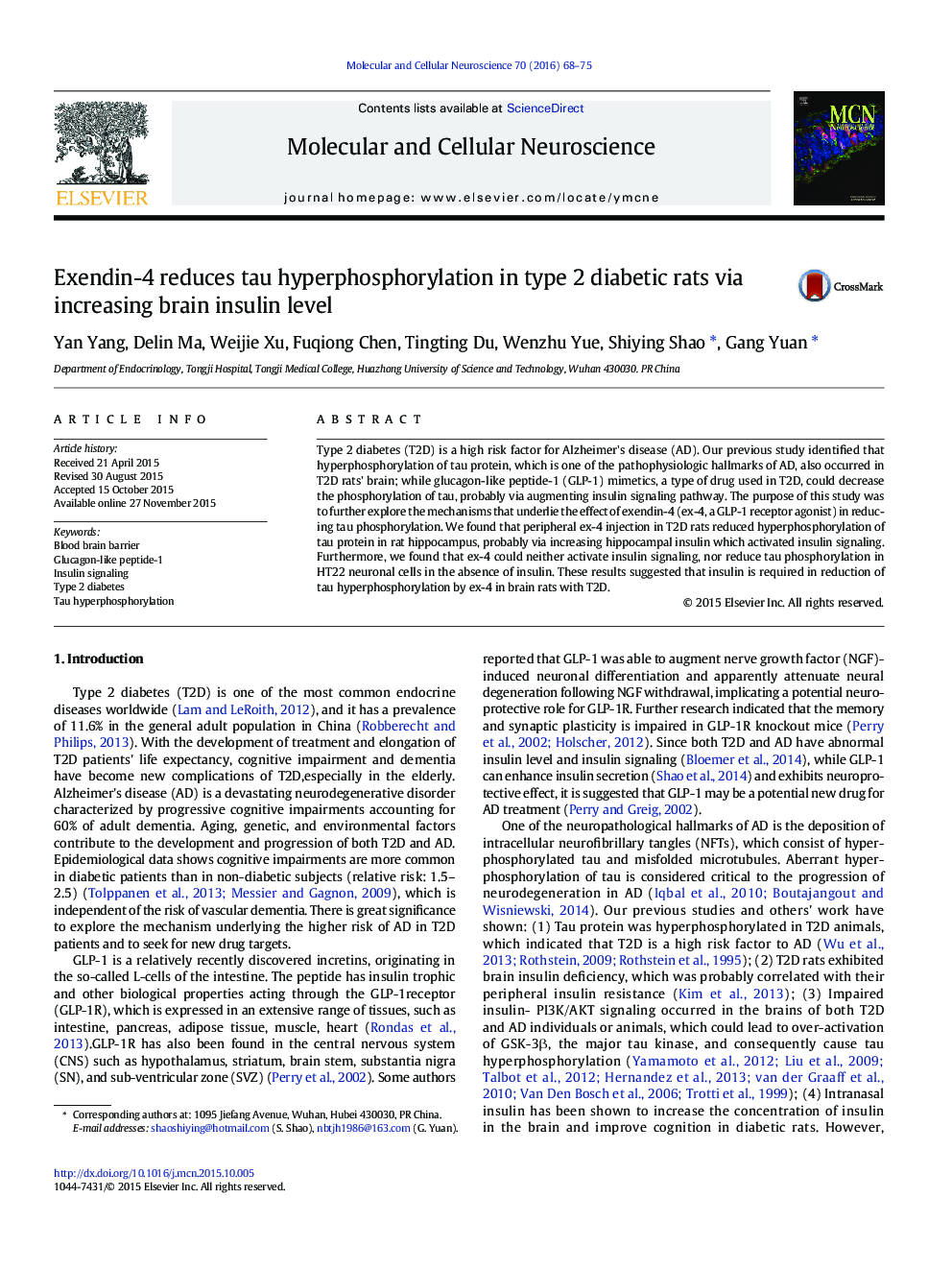| Article ID | Journal | Published Year | Pages | File Type |
|---|---|---|---|---|
| 8478515 | Molecular and Cellular Neuroscience | 2016 | 8 Pages |
Abstract
Type 2 diabetes (T2D) is a high risk factor for Alzheimer's disease (AD). Our previous study identified that hyperphosphorylation of tau protein, which is one of the pathophysiologic hallmarks of AD, also occurred in T2D rats' brain; while glucagon-like peptide-1 (GLP-1) mimetics, a type of drug used in T2D, could decrease the phosphorylation of tau, probably via augmenting insulin signaling pathway. The purpose of this study was to further explore the mechanisms that underlie the effect of exendin-4 (ex-4, a GLP-1 receptor agonist) in reducing tau phosphorylation. We found that peripheral ex-4 injection in T2D rats reduced hyperphosphorylation of tau protein in rat hippocampus, probably via increasing hippocampal insulin which activated insulin signaling. Furthermore, we found that ex-4 could neither activate insulin signaling, nor reduce tau phosphorylation in HT22 neuronal cells in the absence of insulin. These results suggested that insulin is required in reduction of tau hyperphosphorylation by ex-4 in brain rats with T2D.
Keywords
Related Topics
Life Sciences
Biochemistry, Genetics and Molecular Biology
Cell Biology
Authors
Yan Yang, Delin Ma, Weijie Xu, Fuqiong Chen, Tingting Du, Wenzhu Yue, Shiying Shao, Gang Yuan,
